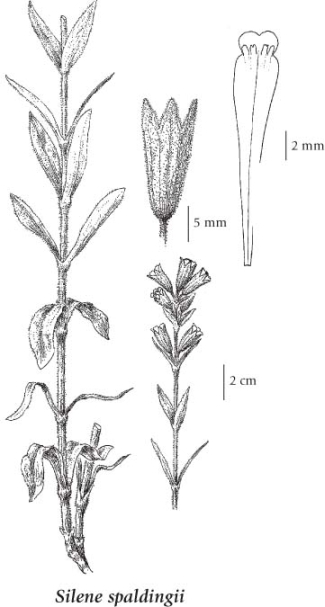Silene spaldingii S. Watson
Spalding's campion (Spalding's silene)
Caryophyllaceae (Pink family)
Introduction to Vascular Plants
Spalding's campion (Spalding's silene)
Caryophyllaceae (Pink family)
Introduction to Vascular Plants
